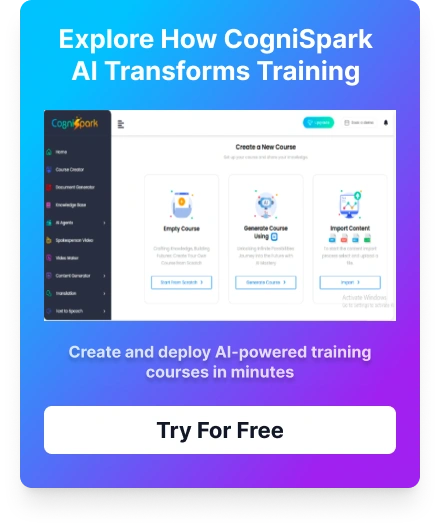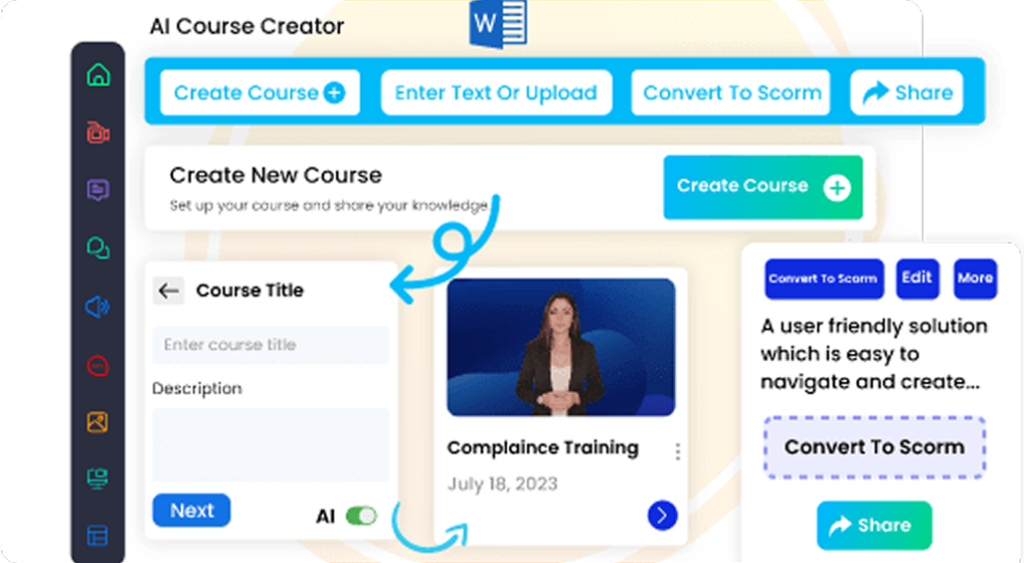Designing eLearning courses can be a lengthy process, requiring attention to detail, creativity, and a deep understanding of the target audience.
However, integrating Artificial Intelligence (AI) into your eLearning workflows can significantly speed up the design process while maintaining quality and engagement.
Here are three powerful ways AI can streamline eLearning design:
1. Automated Content Generation
AI tools are revolutionizing the way content is created for eLearning. Instead of spending hours curating and writing material, AI algorithms can generate accurate and engaging content based on raw data.
How It Helps:
- AI can transform text documents, PDFs, or slide decks into interactive course modules.
- Automates the creation of quizzes, assessments, and knowledge checks.
- Provides suggestions for content improvement based on learning objectives.
For example, tools like Cognispark AI can analyze uploaded materials and auto-generate training content, allowing educators and designers to focus on refining the learning experience.
2. Enhanced Visual and Multimedia Design
Creating visually appealing eLearning modules is time-intensive, but AI can assist in designing layouts, graphics, and multimedia content to engage learners.
How It Helps:
- AI tools can suggest the best multimedia elements to complement your content.
- Automatically resize and optimize images and videos for different platforms.
- Provide pre-designed templates for quick customization.
This feature eliminates the need for manual adjustments, ensuring your courses look professional while saving significant design time.
3. Smart Personalization and Customization
Learner-centric design is critical for effective eLearning, and AI excels at personalizing content for individual needs and preferences.
How It Helps:
- AI analyzes learner behavior and suggests adaptive learning paths.
- Customizes content based on learner profiles, preferences, and performance.
- Provides insights and data-driven recommendations for improving course design.
By leveraging AI-driven personalization, you can deliver tailored learning experiences without spending extra hours adjusting content for different user groups.
Conclusion
Integrating AI into eLearning design accelerates the process without compromising quality. Automated content generation, enhanced multimedia design, and smart personalization are three key strategies that can transform how you create courses. By adopting AI tools, you can save time, reduce effort, and deliver a more engaging learning experience.


























